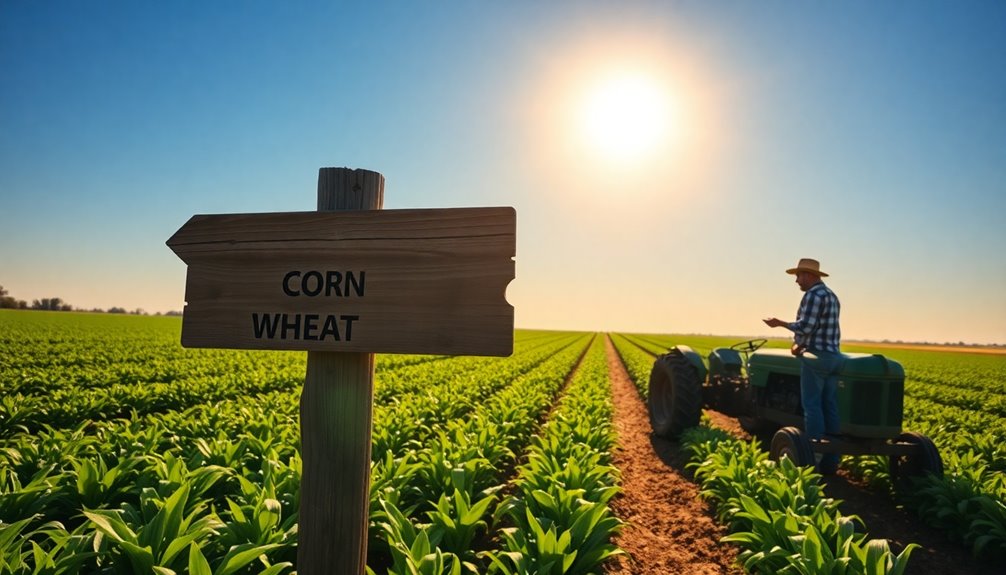To calculate the break-even point for your fall agritourism event, first identify your fixed costs like equipment and insurance, and estimate variable costs such as staffing and concessions per visitor. Then, determine your total expected revenue from ticket sales and extras. Use the formula: Fixed Costs divided by (Ticket Price minus Variable Cost per Ticket). Understanding these numbers helps you plan pricing and marketing strategies, and there’s more to uncover if you continue exploring.
Key Takeaways
- Identify total fixed costs such as equipment, insurance, and staff salaries for the event period.
- Determine variable costs per visitor, including food, tickets, and activities.
- Calculate the contribution margin per ticket by subtracting variable costs from ticket price.
- Use the formula: Break-Even Tickets = Fixed Costs / (Ticket Price – Variable Cost per Ticket).
- Adjust for weather, seasonal factors, and expected attendance to refine the break-even point.
Understanding Fixed and Variable Costs
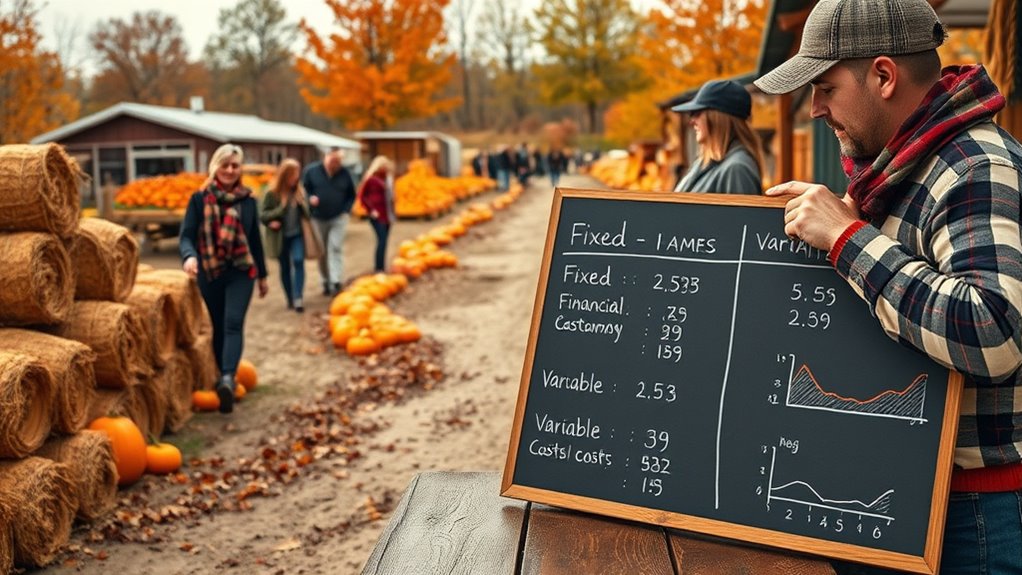
Understanding fixed and variable costs is essential for accurately calculating your break-even point for fall agritourism events. Fixed costs are expenses that stay the same regardless of attendance, like equipment or insurance, while variable costs fluctuate with visitor numbers, such as food or staffing. Proper cost allocation helps you assign expenses correctly to each category, giving you a clearer picture of your cost structure. Knowing which costs are fixed and which are variable allows you to determine how many visitors you need to cover expenses and achieve a desired profit margin. This understanding ensures you set realistic ticket prices and manage expenses effectively, ultimately maximizing your profit margins. Accurate cost allocation provides the foundation for sound financial planning and successful event management. Additionally, understanding cost categorization can help you identify areas where you might reduce expenses or improve efficiency, especially when considering cost behavior in different scenarios. Recognizing the role of precious metals in diversification strategies can also provide alternative revenue streams in uncertain economic conditions. Being aware of compatibility factors such as market trends and customer preferences can further enhance your planning and profitability. For example, leveraging insights from cost analysis can optimize your resource allocation and boost overall profitability.
Estimating Total Revenue From Ticket Sales and Additional Income
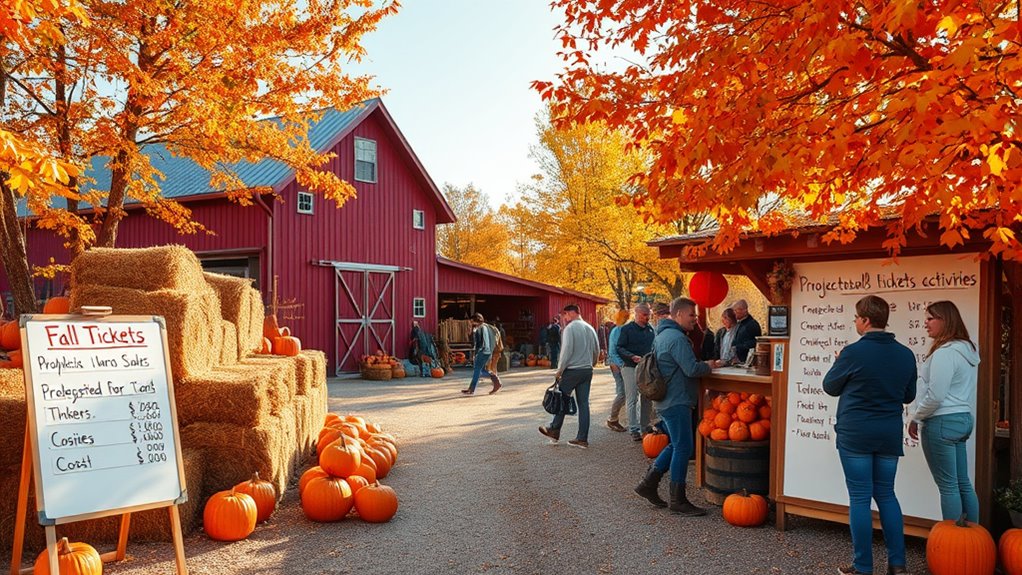
To accurately estimate your total revenue from fall agritourism events, you need to contemplate both ticket sales and any additional income streams. Seasonal weather impacts visitor turnout, influencing how many tickets you’ll sell and how much visitors spend on extras like food, souvenirs, or activities. Understanding visitor demographics helps tailor your offerings, potentially boosting sales and revenue. For example, families may spend more on kids’ activities, while outdoor enthusiasts might purchase equipment or guided tours. Incorporate expected ticket prices based on your target audience and estimated attendance. Don’t forget additional income sources—such as merchandise sales, concessions, or special experiences—that can immensely boost your revenue. Recognizing the financial impact of your events can help you strategize more effectively. Additionally, selecting the right security systems can ensure a safe environment, encouraging more visitors and enhancing their experience. Implementing payment solutions that support multiple methods can streamline transactions and improve customer satisfaction. Considering dining and living spaces can also create more appealing environments that encourage visitors to stay longer and spend more, further increasing revenue potential. Proper planning of additional revenue streams, like offering workshops or farm-to-table dinners, can diversify income and maximize profitability. By considering these factors, you’ll gain a clearer picture of your total revenue potential for the season.
Calculating the Break-Even Point Using the Formula

Calculating your break-even point is essential for ensuring your fall agritourism events are financially viable. To do this, you perform a cost analysis to determine fixed and variable costs, then factor in your desired profit margin. The basic formula is:
| Break-Even Point (units) | Fixed Costs / (Price per Ticket – Variable Cost per Ticket) |
|---|---|
| Fixed Costs | Costs that stay the same regardless of attendance |
| Variable Costs | Costs that vary with ticket sales |
| Price per Ticket | Your ticket price |
| Profit Margin | Your target profit per ticket |
This calculation helps you see how many tickets you need to sell to cover costs and achieve your profit goals. Incorporating farmhouse bedroom design elements can also create a cozy atmosphere that attracts visitors to your agritourism events, encouraging repeat attendance and boosting overall profitability.
Applying Break-Even Analysis to Your Specific Event
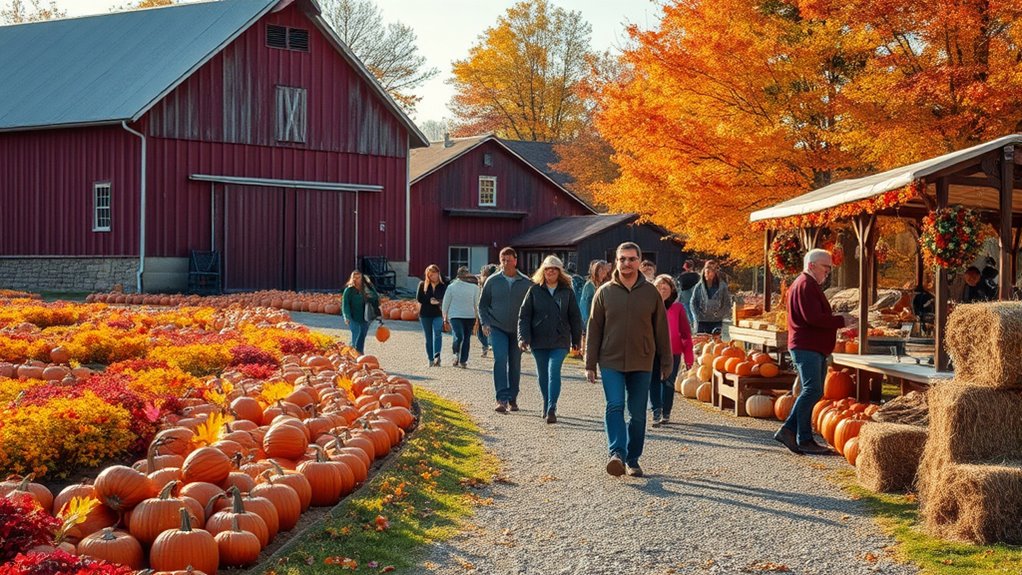
Once you’ve mastered the basic formula for break-even analysis, it’s time to tailor it to your specific event. Consider your marketing strategies—targeted promotions, social media, and local partnerships—as they impact attendance and revenue. Adjust your fixed and variable costs based on expected turnout and any weather considerations that might affect attendance, like rain or cold temperatures. Planning for weather fluctuations helps you set realistic attendance goals and manage costs effectively. Incorporate these factors into your break-even calculations to determine the minimum number of tickets or visitors needed to cover expenses. Additionally, understanding your cost structure allows for better resource allocation and contingency planning. Recognizing the effectiveness of eye patches in skincare routines can inspire you to develop strategies that boost attendance, such as offering wellness or relaxation experiences during your event. Being aware of risk assessment practices in merchant services can help you identify potential challenges and prepare solutions to mitigate them. Furthermore, implementing fraud prevention tools can safeguard your event from financial losses associated with payment fraud. By customizing your analysis, you’ll gain clearer insight into what it takes to make your fall agritourism event profitable, even with unpredictable weather and evolving marketing efforts.
Using Break-Even Insights for Pricing and Marketing Strategies
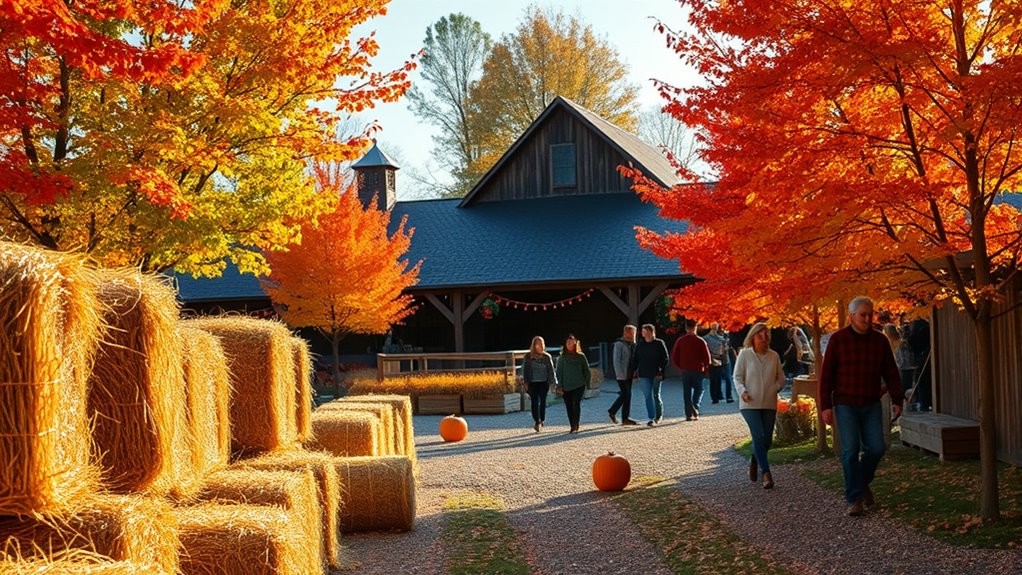
By analyzing your break-even point, you gain valuable insights that can directly inform your pricing and marketing strategies. Understanding this helps you optimize seasonal pricing, ensuring you stay competitive while covering costs. It also highlights which marketing channels deliver the best return on investment. For example:
- Adjust prices based on peak times to maximize profit during high-traffic days.
- Invest more in marketing channels that bring in customers at or below your break-even cost.
- Offer discounts or promotions strategically to boost attendance without hurting profitability.
- Tailor messaging to emphasize value, encouraging visitors to pay premium prices during busy weekends.
- Considering the Wall organization can help create a more inviting and functional space for visitors, enhancing their overall experience.
- Using these insights, you can create a balanced approach that attracts visitors and keeps your event financially sustainable. Incorporating cost analysis into your planning ensures that all expenses are accounted for and help in setting realistic targets for attendance and revenue. Additionally, understanding drivetrain wear can assist in planning maintenance schedules to reduce unexpected costs. Implementing stakeholder engagement strategies can also improve community support and participation, further strengthening your event’s success.
Frequently Asked Questions
How Do Weather Conditions Impact Break-Even Calculations?
Weather variability, especially rainfall impact, can profoundly affect your break-even calculations. If heavy rain or unpredictable weather discourages visitors, your attendance drops, lowering revenue. Conversely, good weather boosts turnout, increasing sales and helping you cover fixed costs more quickly. You need to factor in weather forecasts and historical patterns into your planning, adjusting ticket prices or marketing strategies to offset potential attendance dips caused by adverse weather conditions.
What Are Common Overlooked Costs in Fall Agritourism Events?
Did you know that overlooked costs can add up to 20% of your event expenses? Common overlooked costs in fall agritourism events include marketing strategies, which are often underestimated, and staffing considerations, like extra help during peak times. Failing to account for these can skew your break-even analysis. Make sure you include these factors to get a clearer picture of your true costs and profitability.
How Can Seasonality Influence Revenue Estimates?
Seasonality greatly impacts your revenue estimates by causing fluctuations in seasonal demand. When planning fall agritourism events, you need to modify your pricing strategies to match these demand changes; higher prices during peak times can boost revenue, while lower prices in off-peak periods encourage visits. Recognizing seasonal patterns helps you forecast more accurately, optimize income, and ensure your event’s financial success regardless of the time of year.
What Tools Are Best for Real-Time Break-Even Tracking?
Imagine you’re running a fall agritourism event and want to track your break-even point in real time. Tools like spreadsheets with live data links or specialized software such as QuickBooks or Farmbrite can help. They allow you to monitor profit margin shifts and customer segmentation patterns instantly. By doing so, you can adjust pricing, marketing, or staffing strategies on the fly, ensuring you stay profitable throughout the season.
How to Adjust for Cancellations or No-Shows in Planning?
When planning fall agritourism events, you should use reservation management to track cancellations and no-shows accurately. Adjust your forecasts by analyzing historical data, then modify marketing strategies to fill gaps, such as targeted promotions or last-minute deals. This proactive approach helps you stay aligned with your break-even point, ensuring you maximize revenue despite unexpected cancellations. Continuously monitor and refine your plans for ideal results.
Conclusion
By understanding your costs and revenue, you can pinpoint your break-even point like a navigator charting a steady course through rough waters. This insight helps you set realistic ticket prices and craft effective marketing strategies. Think of break-even analysis as a compass guiding your event’s success—without it, you’re sailing blind. Use these tools to make certain your fall agritourism event not only breaks even but flourishes like a harvest moon illuminating a clear night.





